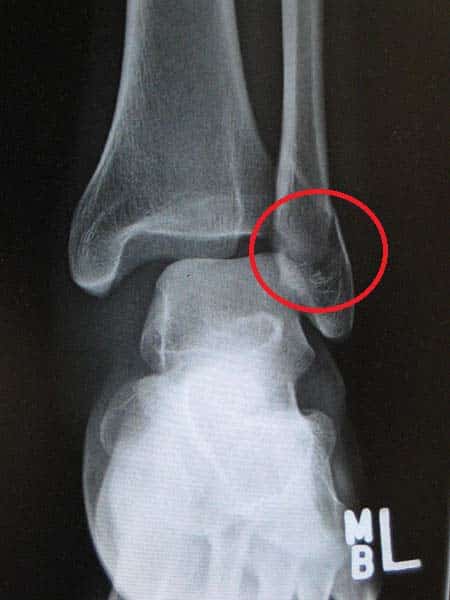

Most patients initially experience ankle pain and/or stiffness that diminishes over time. 56, 62 Treatment of ankle fracture typically involves surgical or nonsurgical intervention, followed by a period of immobilization. However, the majority of bimalleolar fractures do not result in complications and do not require additional surgery to repair.Ankle fracture (ie, fracture of the distal tibia or fibula) is common, with an incidence rate of 13 to 28 per 10 000 persons per annum in young men, 16 to 20 per 10 000 persons per annum in older women, and at least 5 per 10 000 persons per annum across all ages. Risks can involve complications due to infection, nerve damage, anesthesia, bleeding, or blood clots. Your rate of recovery will vary depending on the severity of the bimalleolar fracture, but ankles can typically bear a complete weight load 12 to 16 weeks after treatment.Ĭomplications are rare in bimalleolar fracture surgeries, and if there are complications, they typically relate directly to the surgery. After surgery, you will need a cast to keep the ankle in place while it heals. During surgery, the surgeon will reposition the ankle and hold it in place with special screws or metal plates. If your fracture makes the ankle unstable, you may need surgery to reconstruct the normal shape of the broken anklebone, decrease ligament damage, and accelerate recovery. Your doctor can prescribe several different non-surgical treatments, including a short leg cast or a high-top tennis shoe. If your ankle is stable and the bone is not dislocated, physicians most often recommend non-surgical treatment. The level of the fracture determines the type of treatment that’s best for your injury. Treatment for Bimalleolar FracturesĪ physician will assess your fracture using an imaging test and will recommend treatment. Lost wages and mounting medical bills can also put a strain on the victim’s finances. The effects of a bimalleolar fracture can be severe, preventing a victim from returning to work during the recovery process. Walking may also be labored and/or difficult for several months. Physical deformity, in the case of joint dislocation.Inability to put weight on the injured foot.Common symptoms of a bimalleolar fracture include: However, every ankle fracture injury requires the attention of a physician. If your bimalleolar fracture isn’t severe enough that you can immediately identify you have a broken ankle, this is probably a good sign. Common Symptoms of a Bimalleolar Fracture When an accident compromises the bones, joints, or ligaments, the victim may be unable to walk for 12 to 16 weeks during recovery.

Multiple ligaments hold these joints together, making the ankle stable. The ankle also has two main joints, the ankle join and the syndesmosis joint. For example, if the end of the fibula fractures, it’s a lateral malleolus fracture.

Each bone has different areas doctors use to classify the fracture. Three main bones make up the ankle: the tibia, fibula, and talus. Depending on the severity of the fracture, the ligaments in the ankle can suffer damage as well. Ankle fractures often occur in traumas such as car crashes or trip and fall accidents. One-third of all ankle fractures are either bimalleolar or trimalleor. There are three main categories of bimalleolar fractures: unimalleolar, bimalleolar, and trimalleor.

Types of Bimalleolar FracturesĪnkle fractures can be simple breaks in a single bone or can include several complex fractures and displaced bones. When someone else’s negligence results in a broken ankle, take action against the responsible party. Bimalleolar fractures can cause great pain and suffering as well as financial losses. Post-surgery recovery generally takes several weeks of physical rehabilitation and home exercises. The displacement of bones in the ankle often requires surgery to treat. A number of bones in the ankle can fracture in an accident, leading to severe pain and temporary disability. Bimalleolar fractures commonly occur due to falls, car accidents, and sports-related activities. The medical term for a broken ankle is a bimalleolar fracture, or a break at the lower parts of the tibia and fibula.


 0 kommentar(er)
0 kommentar(er)
